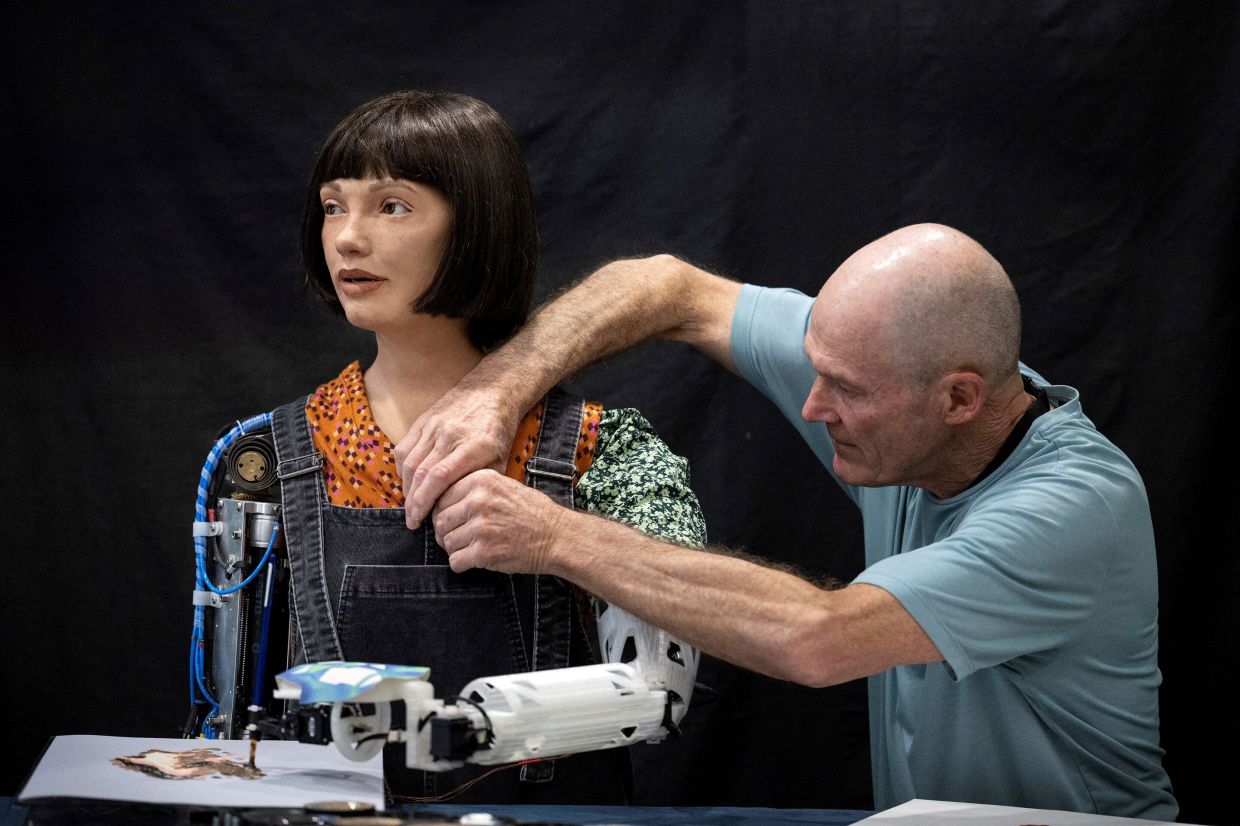
Even highly realistic androids can cause unease when their facial expressions lack emotional consistency.

Researchers have found a way to bind engineered skin tissue to the complex forms of humanoid robots. This brings with it potential benefits to robotic platforms such as increased mobility, self-healing abilities, etc.

Engineered Arts, a robot maker based in the U.K., is showing off its latest creation at this year's CES 2022. Called Ameca, the robot is able to display what appears to be the most human-like facial expressions by a robot to date.
Japanese scientists have created a robot that can "feel" pain. Scientists hope that the pain sensors will help robots to develop empathy for humans and to act as compassionate companions.

Researchers have developed a humanoid robot prototype, HRP-5P, intended to autonomously perform heavy labor or work in hazardous environments.

Erica, a lifelike android designed to look like a 23-year-old woman, may soon become a TV news anchor in Japan.

Dr David Hanson, who created the life-sized Sophia, was quoted saying that the humanoid is already being used to help research autism and other diseases.

A new type of neural network made with memristors can dramatically improve the efficiency of teaching machines to think like humans.

A robot named “Sophia” has made history, as it became the first ever to be granted a full Saudi Arabian citizenship.

It may not be long before humans coexist with robots. So let’s take it positively and move forward.

A British researcher discusses why AI and cybernetics are moving beyond the realm of science fiction - but warns that the technologies also raise significant ethical questions.

Japanese scientists have developed a new humanoid robot that can move naturally by itself utilising embedded neural network. Robot Alter has a ‘human-like’ face and is powered by 42 pneumatic actuators and a central pattern generator.

To make robots more cooperative and have them perform tasks in close proximity to humans, they must be softer and safer. A new actuator generates movements similar to those of skeletal muscles using vacuum power to automate soft, rubber beams.

A soft actuator using electrically controllable membranes could pave the way for machines that are no danger to humans.
A humanoid robot just explored its first shipwreck. The OceanOne, developed by a team at Stanford University, had its first real-world test recently when it surveyed the wreckage of La Lune, a 17th century ship that sunk near the southern coast of France.